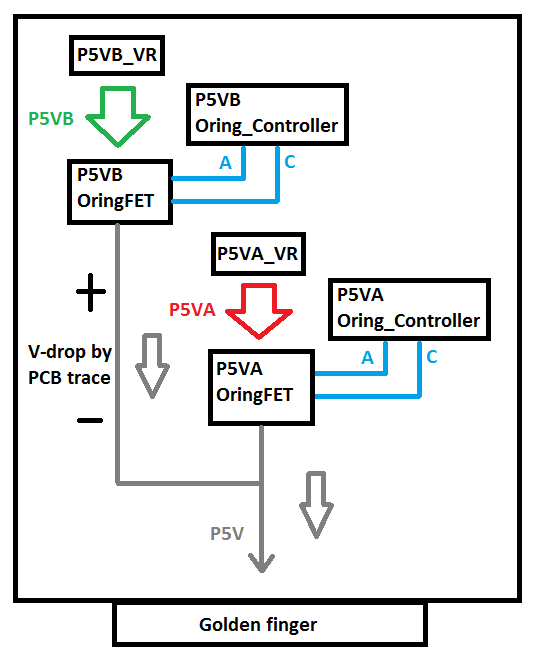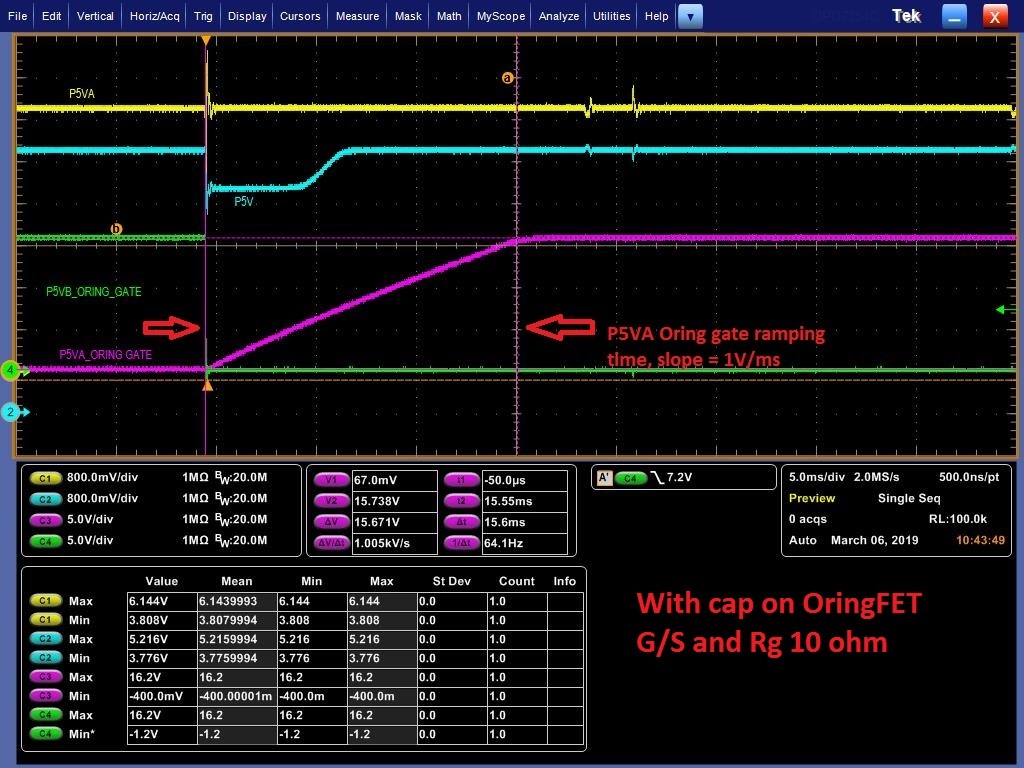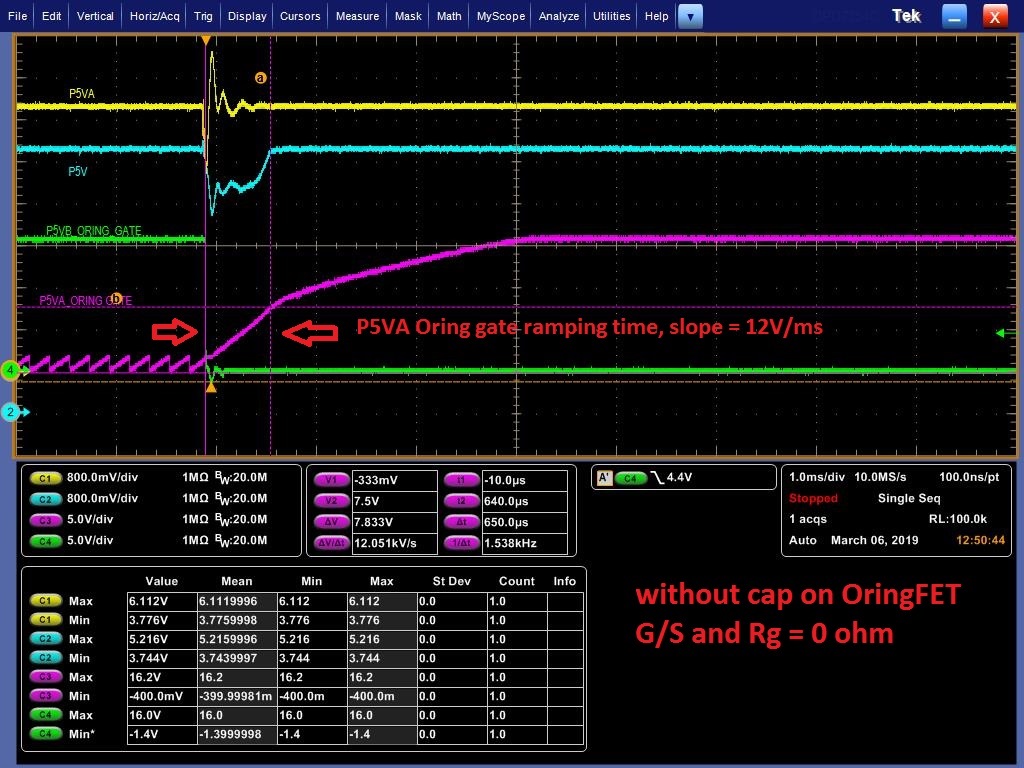Other Parts Discussed in Thread: CSD17570Q5B, TPS2413
Hi TI,
We have two VR for P5VA and P5VB and this design required redundant feature so we add two TPS2412 for oring control without active current sharing circuitry there due to PCB space limitation.
Then we found the Oring gate of P5VA keeps low state at no load or light load condition due to bad current sharing, only P5VB oring enabled.
If we perform the internal short at P5VB rail, the P5V (after OringFET) will drop to about 4.3V (5V-oringFET Vf) because the P5VA oring gate needs about 6ms~15ms ramping time depends on different loading.
After removing the bypass cap (0.22uF) on G/S pin of OringFET and short Rg (10 ohm), the ramping slop is improved from 1V/ms to 12V/ms but still cannot keep P5V within regulation.
Is there any way to improve the turn on speed faster by the setting of TPS2412? or it's limited by the selected OringFET?
Note: The OringFET is CSD17570Q5B * 2pcs
BR.
Stan.






